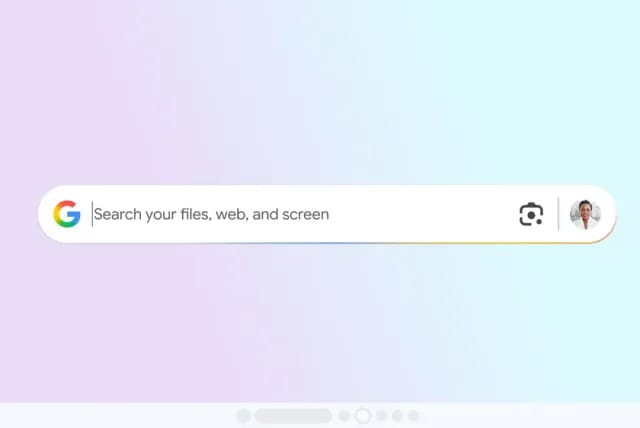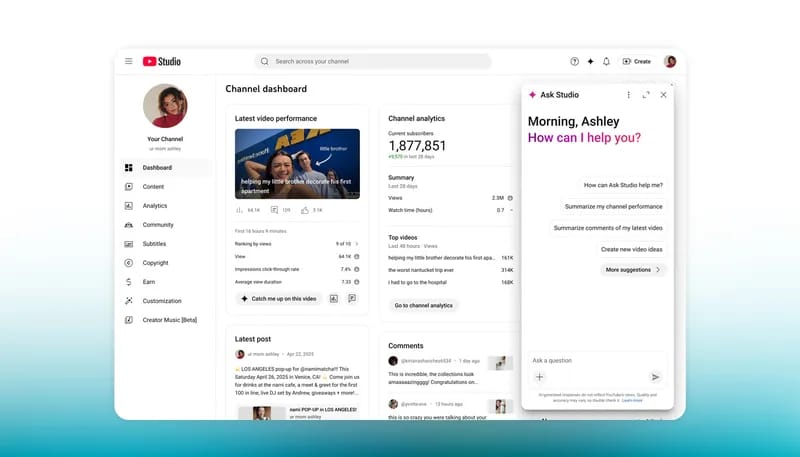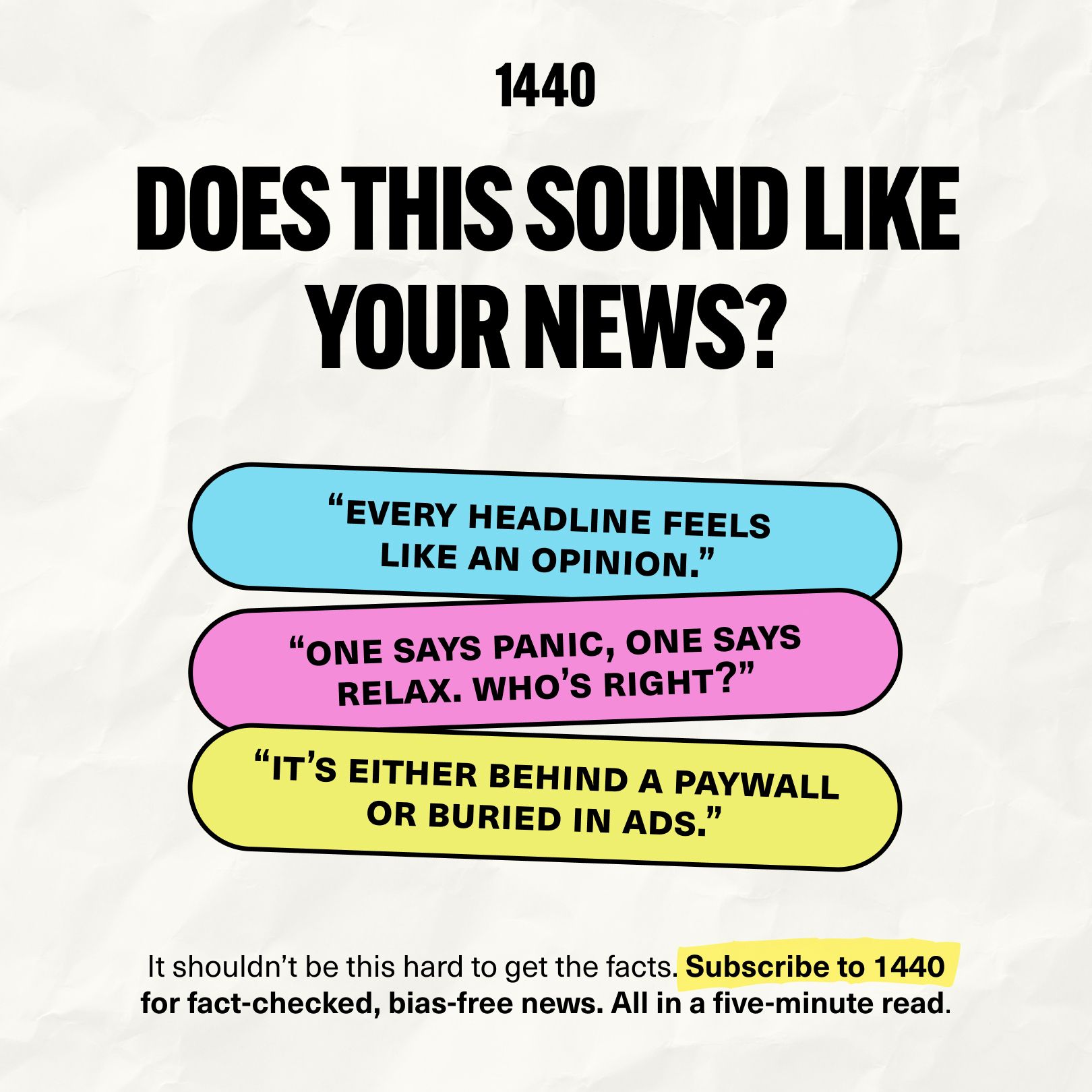- Tech Barista
- Posts
- Google tests floating AI search bar on PC
Google tests floating AI search bar on PC
A new app combines web search file access and Google Lens into a desktop tool aiming to win ground back from Microsoft
☕ Good morning,
It's interesting how the most useful innovations often come from asking "what annoying thing do people deal with every day?" rather than "what's the most impressive technology we can build?" Sometimes, the best breakthroughs are just making existing tasks less tedious.
—Here’s to the first sip.
TOOL BAR
Crustdata: Real-time people and company data via APIs and webhooks
Bult ai: Deploy any apps in seconds, no DevOps required
Gamma: A new medium for presenting ideas. Powered by AI.
TODAY IN AI
Google tests AI-powered search app for Windows

Image: Google
Google is quietly testing a new search app for Windows, and it looks like a mix of Spotlight on Mac and Copilot on Windows. Once installed, the app puts a floating search bar on your desktop that you can move around and resize. A quick tap of Alt + Space pulls it up, letting you search not just the web but also your files and Google Drive.
It comes with Google Lens built in, so you can highlight images or text on your screen, translate on the fly, or even get AI help solving a math problem. The app supports multiple modes from AI Mode to Images, Shopping, and Videos, and you can toggle between dark and light themes.
Google is trying to take back some ground from Microsoft on Windows PCs. Spotlight fans will feel right at home, but this one leans heavily into AI. For now, it’s only available in English, limited to U.S. users with Windows 10 or later, and you’ll need to enable it through Search Labs.
FAST BARISTA
● Gemini is surging in mobile adoption thanks to its Nano Banana image editor, climbing to No.1 on the U.S. App Store. The app hit 12.6M downloads in September so far, a 45% jump from August’s 8.7M. Globally, Gemini ranks as the top 5 iPhone apps in 108 countries and No.2 on Google Play U.S. after ChatGPT. Users have already shared 500M+ images, while consumer spending hit $1.6M in August alone. Overall, Gemini has crossed 185M downloads since its 2024 launch, with momentum still climbing.
● OpenAI CEO Sam Altman unveiled new ChatGPT policies focused on protecting users under 18. The chatbot will block flirtatious talk with teens, add guardrails around suicide discussions, and alert parents or even police in severe cases. Parents can now set blackout hours when ChatGPT is unavailable, giving more control over teen usage. The changes follow a wrongful death lawsuit after a teen’s suicide linked to ChatGPT interactions. Altman said safety will take priority over privacy for minors, even if the balance sparks debate.
● Microsoft is rolling out free Copilot Chat inside Word, Excel, PowerPoint, Outlook, and OneNote for all business users. The sidebar tool can draft text, summarize content, analyze data, and tailor answers to the file you’re working on at no extra cost. The paid Copilot license ($30 per user/month) still unlocks advanced perks like full data reasoning, file uploads, image generation, and GPT-5 access. Businesses won’t see subscription price hikes with this rollout, unlike the consumer plans earlier this year. In October, Microsoft will also bundle sales, service, and finance Copilots into its premium plan for added value.
TECH BARISTA
YouTube adds AI tools to help creators

Image: YouTube
YouTube dropped a bunch of new AI tools that flip the script on how creators manage their channels. Instead of just editing videos or adding music, these features are all about strategy and optimization, the behind-the-scenes work that normally eats up hours.
The star is Ask Studio, an AI chatbot built right into YouTube. It pulls data from your videos and Shorts so you can ask things like: “What moments did viewers like most?” or “What video ideas can I pull from my comments?” It can even suggest title tweaks if it notices where viewers tend to drop off. Basically, it’s an analytics assistant that talks back.
Then there’s thumbnail and title A/B testing. Creators can pair different titles with different thumbnails and let YouTube run the experiment, with the winner decided by actual watch time. Considering how thumbnails and titles make or break clicks, this one feels huge.
YouTube is also expanding auto-dubbing, now syncing lips to match the dubbed language. And creators can tag multiple collaborators on a video, sharing both credit and performance stats.
What’s wild is how platforms are now directly steering content creation. Instead of guessing what works, YouTube is literally telling creators what to post and how. On one hand, that means less trial and error. On the other, if everyone optimizes with the same AI tools, you start to wonder what makes one creator stand out when everyone’s thumbnails, titles, and video ideas are “optimized”?
MORE TO KNOW
● YouTube unveiled a wave of new AI tools at its Made on YouTube event to supercharge Shorts creators. Veo 3 Fast brings quick text-to-video generation with sound, plus new tricks like animating photos and adding props or styles. Remix with AI lets creators turn video dialogue into songs using Google’s Lyria 2 music model. Edit with AI can transform raw clips into first-draft Shorts with transitions, music, and even voice-overs in English or Hindi. Livestream upgrades include dual horizontal/vertical streams, AI-powered highlights into Shorts, real-time reactions, and new monetization tools.
● Microsoft and Cloudflare have seized 338 domains tied to RaccoonO365, a phishing as-a-service group that stole over 5,000 Microsoft 365 credentials across 94 countries. The takedown, backed by a U.S. court order, disrupted the group’s subscription-based toolkit that let criminals mimic brands like DocuSign, Adobe, and SharePoint. RaccoonO365 charged up to $999 for access, even offering AI tools to bypass protections and scale attacks. Microsoft identified Nigerian national Joshua Ogundipe as the mastermind, who is still at large, along with associates. Cloudflare says the crackdown raises costs for cybercriminals and signals a shift to large-scale proactive disruptions.
PRESENTED BY 1440 MEDIA
Looking for unbiased, fact-based news? Join 1440 today.
Join over 4 million Americans who start their day with 1440 – your daily digest for unbiased, fact-centric news. From politics to sports, we cover it all by analyzing over 100 sources. Our concise, 5-minute read lands in your inbox each morning at no cost. Experience news without the noise; let 1440 help you make up your own mind. Sign up now and invite your friends and family to be part of the informed.
GADGETS BARISTA
Vivo X300 brings 4K video and dual 200MP cameras

Vivo’s X300 series is shaping up to be a real spec monster. The phone just popped up on Geekbench showing off MediaTek’s new Dimensity 9500, which officially launches September 22, a day before Qualcomm’s Snapdragon 8 Elite Gen 5. On top of that, Vivo is dropping in its own V3+ imaging chip, letting the X300 record cinematic portrait video at 4K 60fps, something no iPhone or Android can currently do.
Han Boxiao from Vivo teased even more: ultra-fast motion tracking, millisecond shutter response, and AnTuTu scores breaking 4 million thanks to the beefed-up NPU. And if that’s not enough, the X300 Ultra is bringing a wild setup with not one but two 200MP cameras.
This isn’t just an iterative bump, Vivo’s clearly trying to stake its claim as the phone that pushes camera and performance boundaries at the same time.
FAST FLASH
● Xiaomi will launch the 17, 17 Pro, and 17 Pro Max later this month, skipping the 16. The 17 Pro is tipped to feature a 50MP main camera, 5x telephoto zoom at 115mm, and a 17mm ultrawide, all Leica branded. Leaks say the Pro Max will pack a different camera setup, not just bigger size and battery. The Pro is also rumored to sport a 6.3-inch 120Hz display, positioning it above the base 17. This lineup could sharpen Xiaomi’s high-end game against Apple and Samsung.
STARTUP BAR
Nothing raises $200M to build AI-first devices

Image: Nothing
Carl Pei’s startup Nothing locked in $200 million in Series C funding, putting its valuation at $1.3 billion. The round brought in big names like Tiger Global, Qualcomm Ventures, and Indian entrepreneur Nikhil Kamath, alongside existing backers. In just four years, Nothing has shipped millions of devices and crossed $1 billion in sales, growing 150% last year.
Pei says the next phase is about making hardware AI-native. The vision is bold: operating systems that adapt to each individual, learning their context and acting like personal agents. Instead of a one-size-fits-all OS, Pei imagines a billion different ones tailored to a billion people. For now, the focus is on phones, earbuds, and smartwatches, but the long-term plan stretches into glasses, EVs, and even robots. The first wave of AI-native devices will arrive next year


